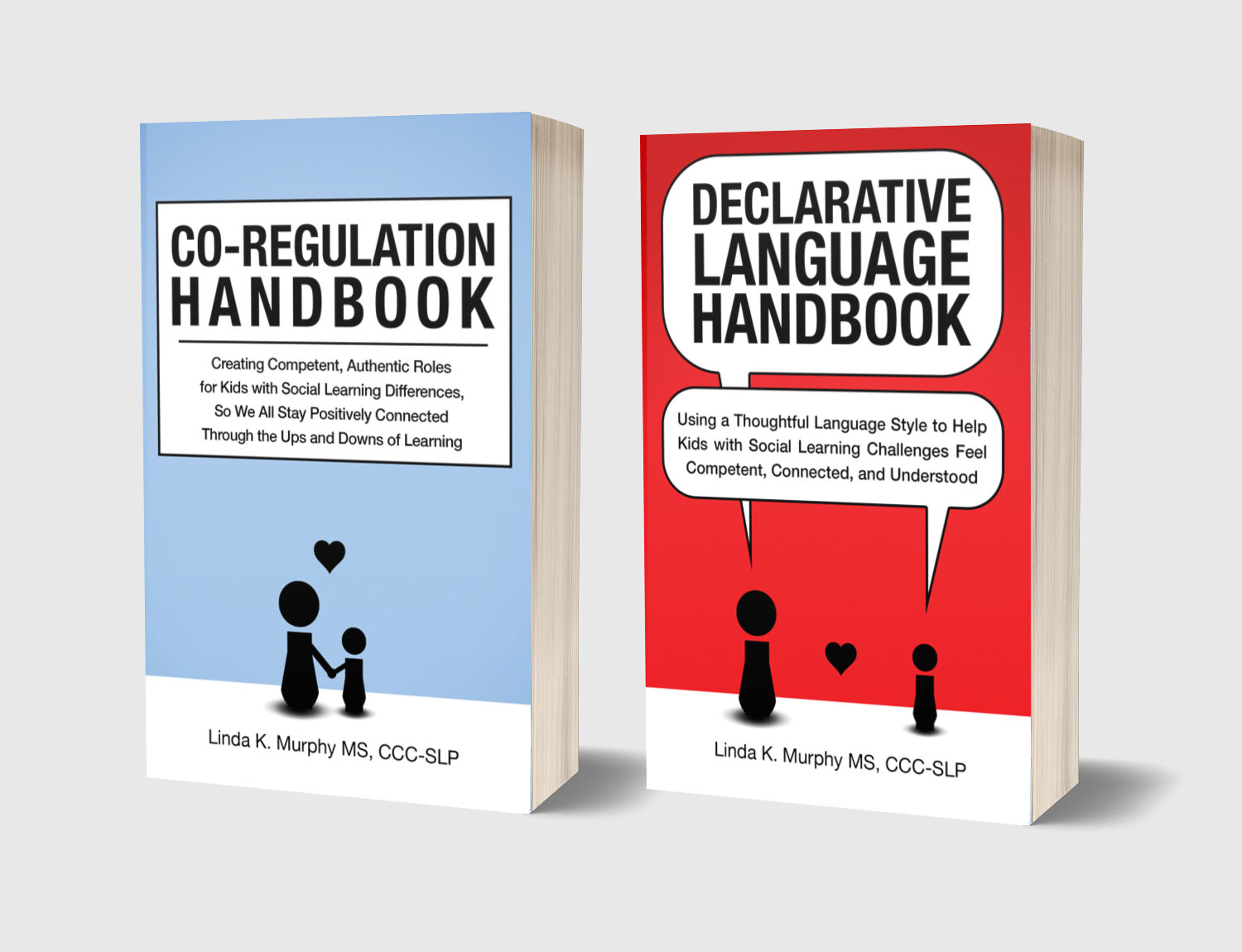Cognitive Rigidity or… Processing Time Needed? - Part 3
Information Nuggets
The Backstory
Over the past two posts, I have been talking about processing time, and how we may observe what is perceived to be “cognitive rigidity”, when an individual is NOT allowed the processing time they need (you can read them here: Part 1, Part 2). I think about processing as both the comprehension and integration of new information into one’s existing understanding of the world (or, to use Piaget’s terms: assimilation, accommodation and equilibration). This process is nuanced, complex, and important to understand. You can read my previous posts in this series to best appreciate where we are now headed.
In this post, I’d like to get into some declarative language and co-regulation strategies that - in my experience - support our learners’ ability to process new information.
First things first…
As discussed in Part 2, we must first be present in the moment - quietly and thoughtfully observing our learner - to determine when to share information with them. If we share information at a time that they are not ready to receive it (because, for example, they are thinking about or focusing on something else), that information will be harder for them to process (assimilate, accommodate, and equilibrate).
This difficulty in the moment may look like they are “ignoring” us, and if we continue to push them to process new information at a pace that is not manageable to them, it can lead stress responses (fight/flight/freeze … you know, “challenging behaviors”).
So then, how do we do this successfully? Specifically, how do we present new information (or a new “nugget” of information as I like to think of it) at a pace that we know is manageable to our learner?
To follow are some of the things I think about when I want to share information.
First, I keep in mind that a “nugget” of information can come in many different forms. For example, it could be auditory (e.g., spoken language or a sound), or it could be visual (e.g., a facial expression, a gesture, written text, showing or presenting an object, or even a change in the environment).
It all matters.
And, I work to remember that some learners are especially sensitive to change.
A change that may seem small to me, could in fact feel unsettling to them. So, whatever the new nugget of information is, and no matter my personal experience with it, it is important for me to rememeber that my learner may need time to process it.
Then what…?
Next, as I get ready to share a nugget of information with my learner, I get physically closer if it is comfortable to them, and/or get lower, to establish our connection. I then try to use a slower rate of speech, and a positive or reassuring tone, as I make a declarative statement that will help them know I have something “new” to share.
For example, I may say things like:
“Vivian … I have something important to tell you.”
“Samuel… I have an idea that I would like to share.”
“Connor, I am thinking about something, and I’d love to tell you.”
“Ooooh! This is exciting! I’d love to share it with you, when you are ready.”
And then I PAUSE.
Importantly, I am not rushing to share the “nugget.”
Rather, I am using declarative language (followed by a pause) to give my learner a heads up that a “nugget” (i.e., novelty, new information, and/or a possible change) is coming, so that they can feel regulated, ready, and even open to that nugget, when it arrives.
Remember, if they feel ready, they will be better able to process and integrate the new nugget of information.
At the same time, I am gauging if now is - in fact - a good moment for them to receive the information I want to share (i.e., are they ready?). In the pause, I observe my learner’s nonverbal and/or verbal signals, to help me determine this. (I share several of these ready vs. not ready signals in Part 2. )
For example, my learner may say “what?”, or “yeah?”. Or, they may visually reference me, or pause what they are doing. Or, they may come towards me if I am holding out something for them to notice. These cues are often an invitation, or permission, for me to to continue.
When I am in tune with my learner’s in-the-moment communication in this way, it becomes much easier for me to respond in a way that is supportive to their processing (this is co-regulation!).
If they communicate readiness, I proceed and share my nugget.
But, if they are not yet ready (and I know this because they have responded with one of the cues that I mentioned in Part 2 that indicate they are NOT yet ready for new information), then I pause and consider how to best proceed.
This too is part of being in sync with my learner (co-regulation). What I do next matters because if I want to share information successfully, we both must be present for it.
From there, I may wait a bit longer, and often am thrilled to see how my learner naturally shifts their attention towards me, independently transitioning their thoughts when they are comfortably able to do so, as long as I give them time. It could take 10-20 or even 30 seconds, but I can assure you, the wait is worth it.
20-30 seconds may feel like a long time in the moment, but when you think about it in the larger context, allowing a learner to independently shift their attention towards you, when they are ready, feels worlds better to everyone than forcing it to happen.
When the process unfolds in this way, it is graceful, it is a dance, and it communicates mutual respect. Furthermore, the positive forward momentum present on the other side of that pause is connecting and empowering, to everyone.
Although the pause can feel awkward at first, it becomes more natural the more you do it (I promise!), and you develop a beautiful, unique rhythm between you and your learner.
Getting In Sync with Your Learners’ Processing Style Handout
Here is this information all in one place!
But, what about when they are STILL not ready…?
Sometimes, however, I try to introduce an idea that is new or different, and my learner is not ready to engage with it, even after I’ve given them in-the-moment processing time.
When this happens, I want to respect what they are telling me.
So instead, I start to think about episodic memory, and how I may create a future narrative with them, around that new idea, at a pace that feels comfortable to them.
This gets exciting, as it leads to all sorts of important things, like future planning, decreasing anxiety related to time pressure, and the development of self-awareness and self-advocacy around processing time specifically.
So… stay tuned, and we’ll get into that next time in Part 4!
Thank you for being here!
Come practice the pause with us! Our 4-Week Declarative Language & Co-Regulation Virtual Coaching Workshop starts this week! Details are here.
Learn from the best experts in this FREE summit to help your kids reset their screen time to avoid negative health impacts like anxiety, depression, craving or loneliness.
Sunday Snippets of Support
If you like them, you can receive them directly to your inbox here!
If you like them, you can receive them directly to your inbox here!
















